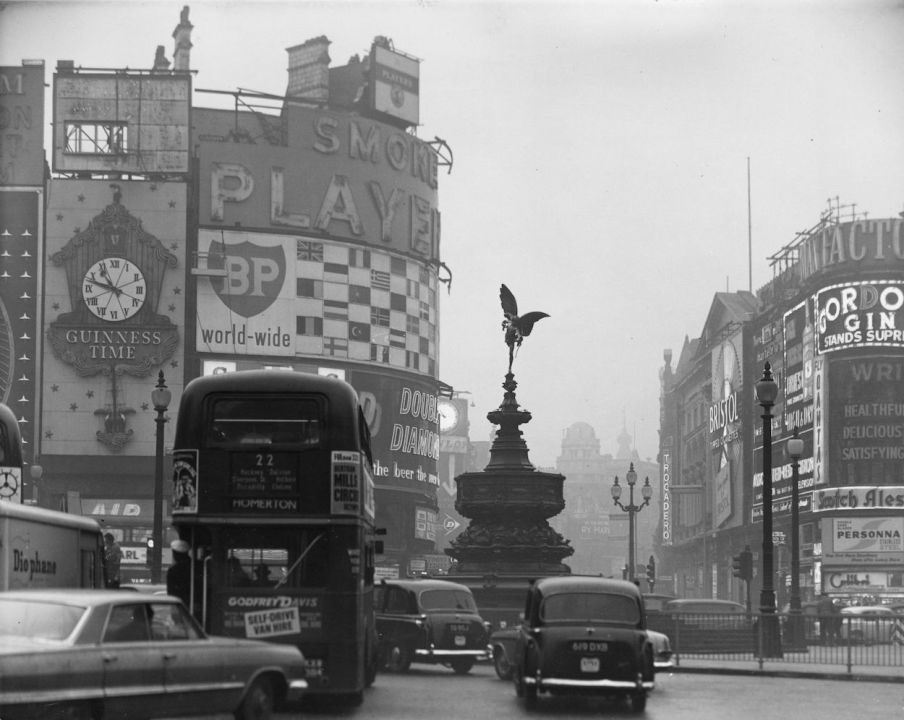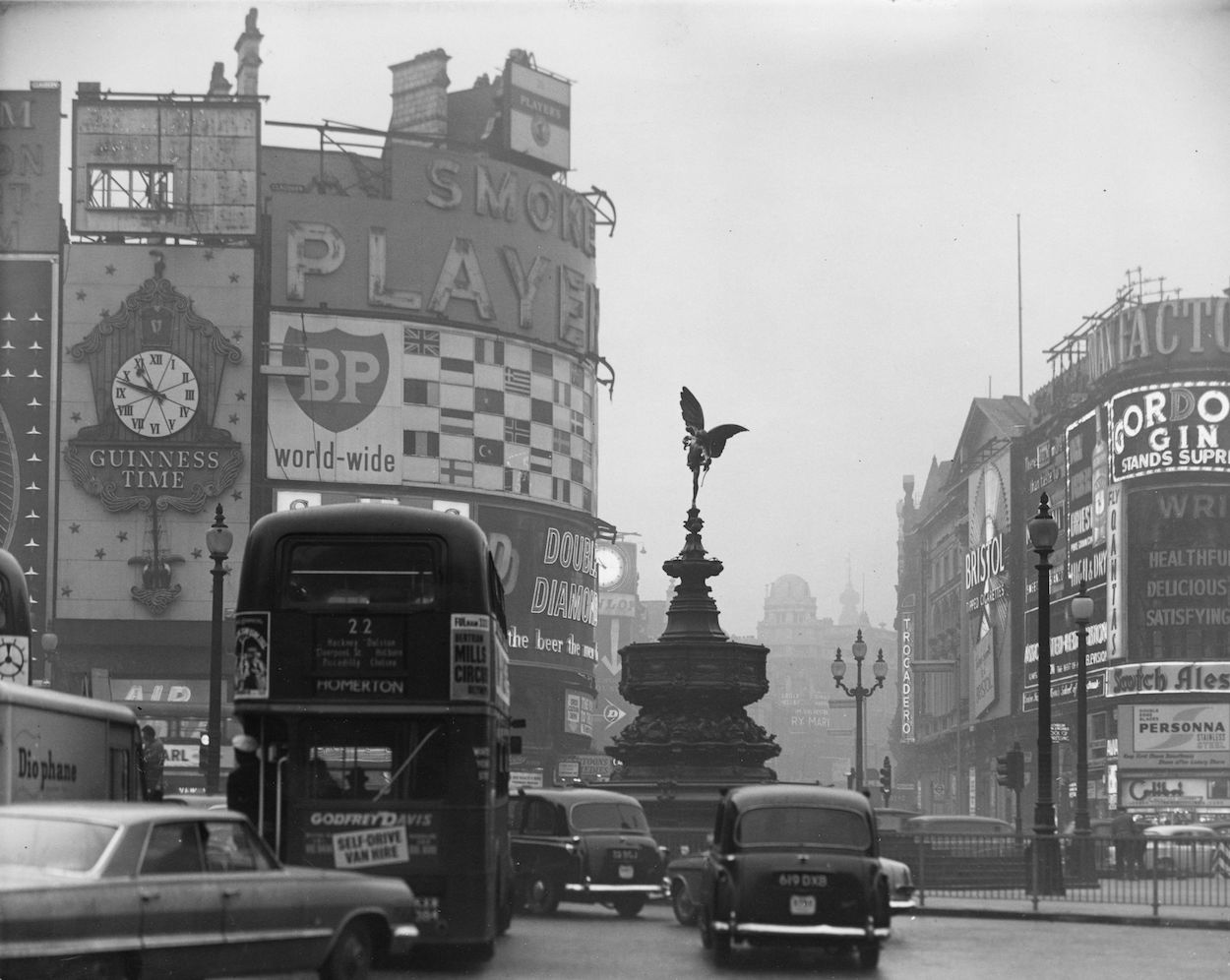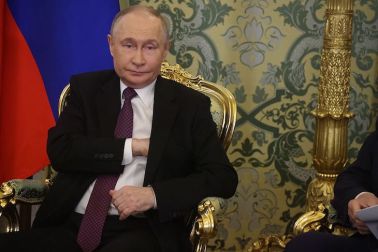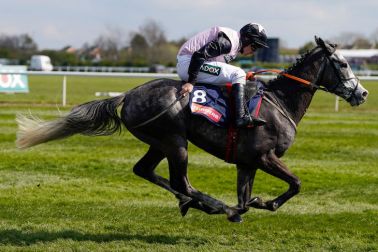It’s always sad to see a beloved landmark lose its identity – but when the landmark in question is one of the most recognisable places on earth, it’s doubly troubling. In recent years, Piccadilly Circus, once described as ‘the hub of the world’, has descended into a shamefully hollowed out sideshow. Stately Edwardian buildings, once home to department stores, elegant restaurants and upmarket entertainment venues, lie empty or have been colonised by dubious landlords and cancerous ‘candy stores’.
All of life seemed to congregate here – it really did feel like the epicentre of the world
The West End has always been London’s beating heart but these days the old ticker is in need of a defibrillator. Piccadilly Circus in particular is a grim reminder of what happens when neglect takes hold of an area. And if it can happen in the middle of the world’s capital, imagine how much worse it must be for provincial city centres where even some high street jack boots now fear to tread. Not to over-romanticise what is essentially a busy traffic island, there was always a dizzying sense of excitement as you rounded the corner from Piccadilly into the buzz of the Circus itself – and I don’t just mean the buzz of a million incandescent light bulbs beaming out from one of the world’s largest advertising hoardings.
All of life seemed to congregate here – it really did feel like the epicentre of the world. As well as the usual tourists you’d find smartly dressed theatregoers, scruffy hawkers, tipsy Soho dandies and shop workers wiling away their lunch break on the steps of the Shaftesbury Memorial Fountain better known as Eros. And while it’s true that this unconventional corner of the city always had its seamy side, even that felt like a vital, organic part of the whole rather than the result of questionable council decisions as seems to be the case today.
Nearby Soho may have been stripped of its many strip joints but at least it has managed to reinvent itself as another, particularly fun place to have a drink. Reinstating Raymond Revue Bar’s kitschy 1970s neon sign on the side of a dreary new build however only serves to remind Soho stalwarts of what’s been lost. Rampant gentrification has decimated what was once a delightfully scuzzy but lively red light district; these days there are barely a dozen flats used for prostitution.
Although Piccadilly Circus is slightly to the south of Soho, it too had its own porno cinema back in the day, made famous by John Landis in his 1981 horror movie An American Werewolf in London. After years of decay, during which the basement flea pit became a popular haunt for local rent boys seeking a place to service clients, the cinema finally closed in 1985 making way for a Gap clothing store.
After the chain collapsed into administration in 2021, the site remained empty until Land Securities, who had acquired the plot back in 1968, completed their ambitious but predictable retail and housing development this year. The luxury penthouse apartments have no doubt been flogged off to foreign investors, leaving behind yet another perma-dark safety deposit box squatting over one of the city’s premier sites.
Over on the western side of the Circus, the grand Swan and Edgar department store building, opened in 1928 and described at the time as supplying ‘every need for men, women and children’, closed in 1982 and has remained empty since Virgin Megastore moved out over ten years ago. The nearby Criterion theatre is just about hanging on while the elegant Criterion restaurant next door, once renowned for its afternoon tea and opulent mosaic interior went into administration in 2015. A dreary pizza joint took over for a while and more recently the Masala chain of Indian restaurants has moved in to what is rapidly becoming the Bermuda Triangle of retail and hospitality. Even Eros remains shrouded in tarpaulin as if to protect the god of carnal love from the creeping desolation.
More recently, concerns have been growing about Westminster Council’s decision to approve plans drawn up by billionaire entrepreneur Asif Aziz to transform the famous Trocadero into a mosque. Once a grand Edwardian dining room, but more recently a garish amusement arcade which thankfully closed in 2011, this landmark building could soon be welcoming up to 390 worshippers for Friday prayers.
In many ways the decline of Piccadilly Circus is a microcosm of what’s been happening down the road in Parliament Square. Once a proud ‘beacon of democracy’ supplying ‘every need for men, women and children’, parliament has become just another moral and cultural desert where nothing is sacred and everything is up for grabs. What we are left with in both these cases is a mishmash of lost opportunities combined with a lack of will and more importantly, nothing even resembling a grand vision. There is one key difference: Piccadilly Circus doesn’t contain clowns.
This article is free to read
To unlock more articles, subscribe to get 3 months of unlimited access for just $5








Comments
Join the debate for just £1 a month
Be part of the conversation with other Spectator readers by getting your first three months for £3.
UNLOCK ACCESS Just £1 a monthAlready a subscriber? Log in